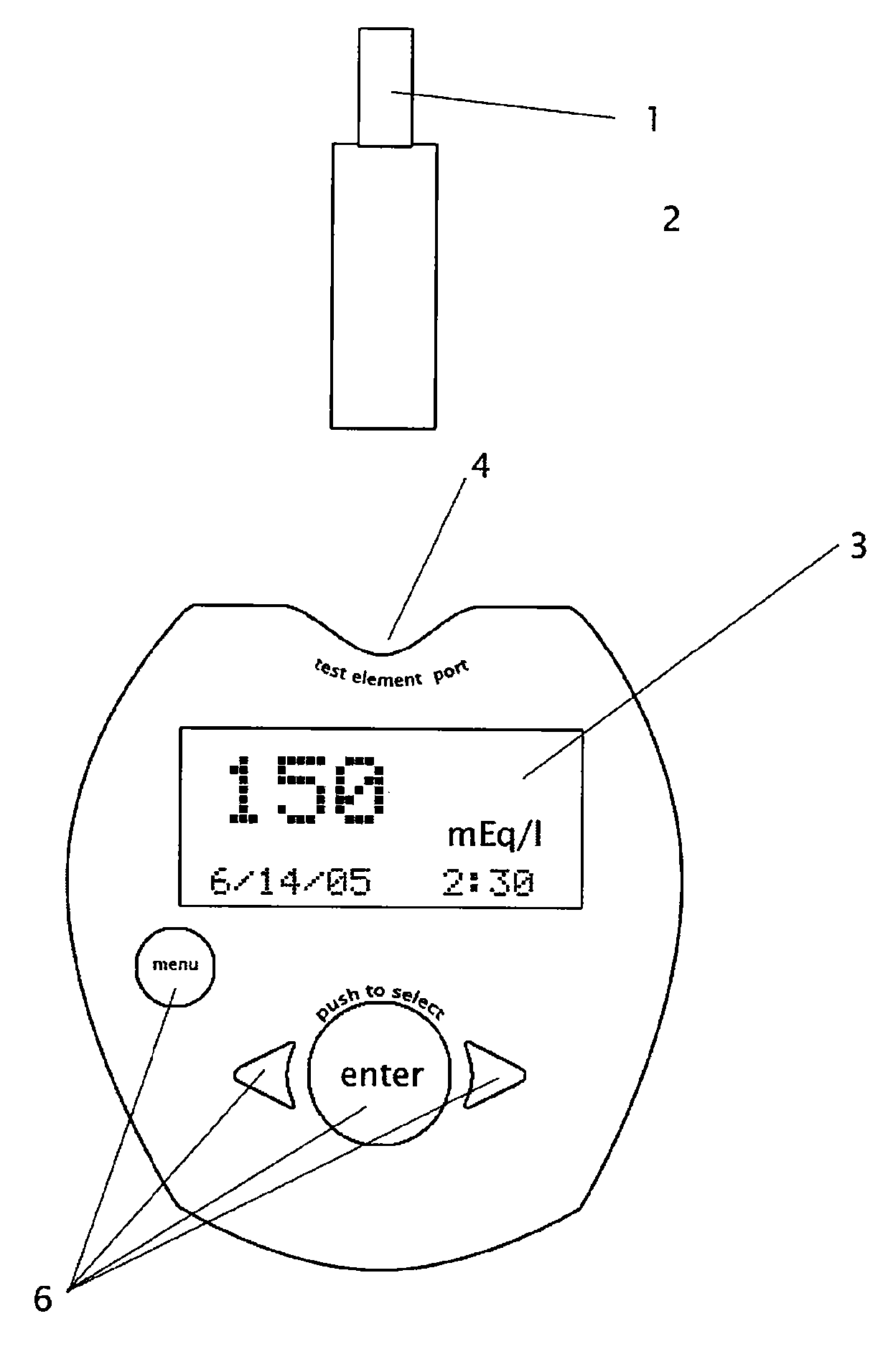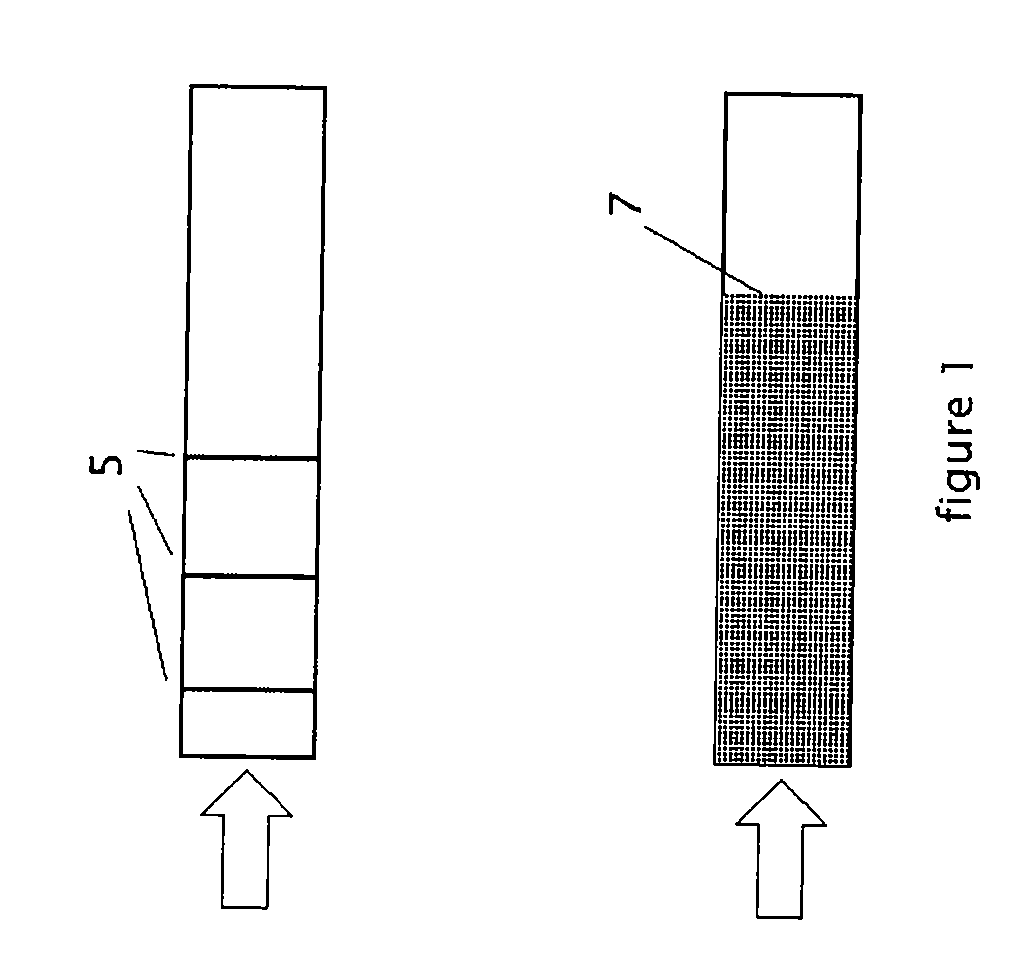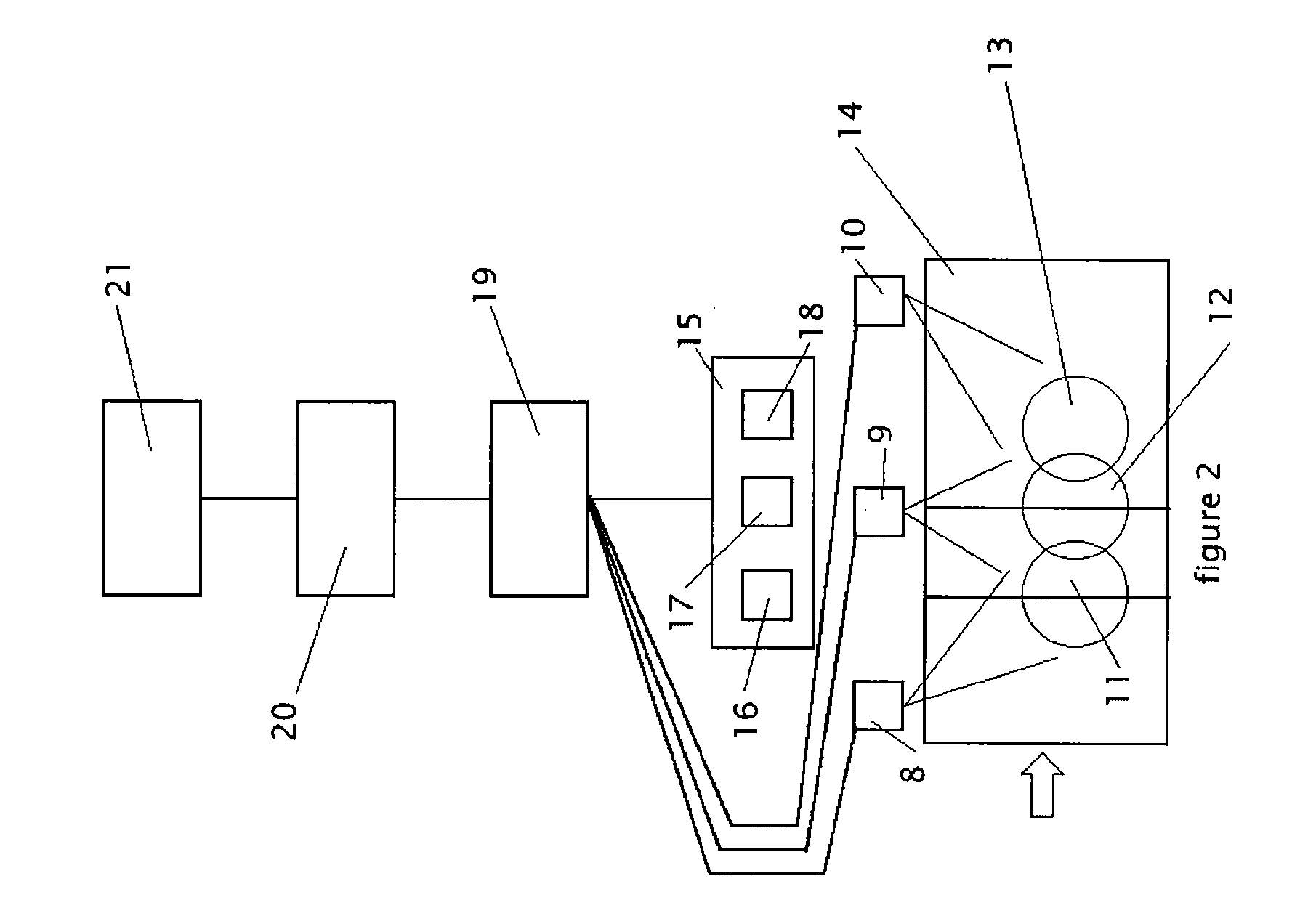[0038] A key feature of this invention is the determination of
analyte concentration in a nonblood
body fluid sample via a dual measurement of the distance along the length of a
test element required to deplete the sample of
analyte ions and reflectance at one or multiple regions along the
test element, such dual measurement providing reduced interference and enhanced
assay sensitivity. An additional element of the invention is the use of the
enzyme beta-galactosidase immobilized on a diagnostic strip to reduce the free concentration of sodium ions to within the optimal range for the
enzyme beta-galactosidase prior to, or during, quantitation of the sodium
ion using this
enzyme.
[0041] A buffer or
wetting agent may carry the analyte in the nonblood
body fluid sample into the detection zone of the
test element. The detection zone typically is in the
solid phase and contains an
immobilized enzyme, such as beta-galactosidase, which can react with the sample to produce a detectable
signal representative of the presence of an analyte
ion, such as sodium. A
label for the enzyme, such as a calorimetric substrate, may be placed within a buffer or within the
solid phase test element or both. As the buffer carries the sample along the detection zone of the test element, analyte in the sample reacts or binds with the enzyme or
label located on the medium, thereby generating a visible color or other change. Lateral flow or other transport technology enables this calorimetric reaction to continue to advance across the entire detection zone, carrying the depleted sample with it.
[0044] In order to facilitate depletion, the beta-galactosidase concentration in a
solid phase
chromatography medium need not be constant. The solid phase nearest the location of sample placement may contain higher concentrations of the enzyme, thereby facilitating rapid depletion of a portion of the analyte early in the
chromatography procedure. Similarly, the solid phase nearest the end of the medium may contain lower concentrations of the enzyme, thereby stretching the physical distance that distinguishes medically interesting
molar concentrations of analyte.
[0053] The present invention has certain objects. That is, the present invention provides solutions to problems existing in the prior art. It is an object of the present invention to provide a device for accurately measuring analyte concentration in oral fluids in an outpatient setting without the use of toxic binding agents. It is an object of the present invention to provide a device for measuring saliva sodium concentration that is rapid, non-invasive, and low-cost, thereby enabling individuals to monitor fluid and
electrolyte levels in an outpatient setting. Another object of the present invention is to diagnose various fluid and electrolyte disorders in an outpatient setting, thereby enabling patients to make informed healthcare decisions. Another object of the present invention is to provide a method for titrating fluid and electrolyte delivery based on actual fluid and electrolyte replacement needs, thus combining oral delivery therapies for administering fluid and electrolytes with monitoring technologies so as to effect tight control over the fluid and electrolyte level of a patient. The optimal intravenous or oral rehydration solution varies widely from patient to patient, and intra-patient over time, based on a number of different factors. The device of the present invention can measure sodium replacement requirements, enabling the dosing of a rehydration solution based on the unique biometric needs of the patient.
[0054] Various embodiments of the present invention have advantages, including one or more of the following: (a) enabling patients to diagnose various fluid and electrolyte disorders in an outpatient setting; (b) improving the direct or indirect control that may be exercised over the fluid and electrolyte levels of a patient; (c) quickly enabling the delivery of the required amount of sodium to a patient before hypernatremia,
hyponatremia, volume depletion or
edema develop or become life threatening; (d) overcoming the deficiencies of relying on “best guess” estimates of fluid and electrolyte replacement requirements, either or both of which are often under- or overestimated by patients; (e) reducing the number and severity of medical complications, thereby increasing patient safety and lowering health care costs due to better control of patient fluid and electrolyte levels.
[0056] By measuring saliva sodium concentration, and adjusting rehydration therapy based on this data, individuals can reduce the long-term threats associated with renal and cardiovascular complications. The methods and devices of the present invention constitute a reliable saliva sodium concentration measurement
system that permits enhanced, tight control of patient fluid and electrolyte levels, among other medical conditions.
 Login to View More
Login to View More  Login to View More
Login to View More 


